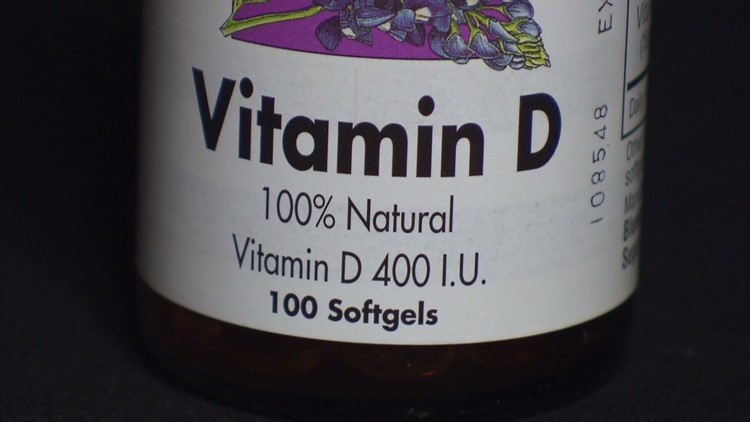You may have seen supplements containing vitamin D at your local convenience stores or been tested for deficiency by your doctor. But what is vitamin D, and why do we need it?
The nutrient plays a large role in bone maintenance by helping us absorb calcium. Our bodies naturally produce it when we are exposed to sunlight, and some foods we eat may contain it naturally or may be fortified with it. All vertebral animals, not just humans, need vitamin D.
Too little vitamin D may result in deficiency, which has been associated with the development of softening and weakening bones. These symptoms manifest as rickets in children and osteomalacia in adults.
Vitamin D sources
Vitamin D is found in a variety of the foods we eat. Fatty fish, such as tuna, salmon, cod and mackerel, all contain high levels. Other foods, like milk and orange juice, can be fortified with it. There are also over-the-counter supplements you can take; however, some of them contain well over the recommended daily intake, and research has called their effectiveness into question. But the easiest way to obtain vitamin D is to just go outside on a sunny day.
A kind of cholesterol present throughout your skin naturally absorbs UVB radiation from the sun and converts it into a form of vitamin D.
Dr. Clifford Rosen, a professor of medicine at the Tufts University School of Medicine and senior scientist at Maine Medical Center, said it’s generally better to get vitamin D from the sun and food than from supplements.
Besides the fact that the sun is free while bottles of supplements are not, it is possible to take too much vitamin D, which could increase the risk of kidney stones and other health issues, Rosen said. The patients he sees who typically have excess vitamin D take daily supplements containing 5,000 to 10,000 units of the vitamin, significantly above the recommended daily amount.
On the other hand, biochemical pathways in our body prevent us from producing too much vitamin D from sun exposure, so it’s not possible to “overdose” that way, said Paul Thomas, a scientific consultant for the National Institutes of Health’s Office of Dietary Supplements.
Vitamin D benefits
In addition to keeping bones strong by helping the body absorb calcium, vitamin D has been associated with a decreased risk of a number of conditions, such as osteoporosis, hypertension and cancer. However, other research suggests that vitamin D supplements may not be a panacea.
Thomas said it is safe to assume that vitamin D’s benefits are marginal at best, though researchers cannot know for sure until large, randomized studies are conducted and their results analyzed.
“For many of the nutrients maintaining health or treating disease, the effect at best is going to be very small,” he said.
Another issue in studies that associate low vitamin D levels with sickness is a lack of causality, Rosen said. Sick people may have lower vitamin D levels due to their illness, not necessarily the other way around.
How much vitamin D is enough?
In 2010, a committee from the Institute of Medicine, now known as the National Academy of Medicine, recommended new guidelines for vitamin D intake and adequate blood serum levels of a vitamin D biomarker. Rosen, who served on the committee, said that people are typically at risk for developing deficiency if their serum level of the biomarker is less than 12 nanograms per milliliter, far below the adequate level of 20 ng/mL.
It is counterproductive to talk about vitamin D inadequacy or insufficiency because these levels are often relative, Rosen said, and can lead to conclusions that most of the US population is deficient or a small minority is, depending on the value chosen as “inadequate.”
To attain the 20 ng/mL blood serum level of the vitamin D biomarker, the National Institutes of Health recommends an average daily amount that varies from 400 to 800 International Units of the vitamin, depending on one’s age.
Thomas said there is “a range in which you can play,” from the mid-hundreds to around 4,000 units of the vitamin per day, the safe upper limit according to the National Academy of Medicine.
Vitamin D deficiency
Symptoms of vitamin D deficiency can include bone and muscle weakness, increasing the risk of fractures and falls for older adults. In children, deficiency can lead to a softening of the bones known as rickets. After scientists discovered rickets’ link to vitamin D deficiency in the 1900s, they began fortifying foods with the vitamin, and the condition is now considered a rare disease by the National Institutes of Health.
For most people, vitamin D deficiency doesn’t develop out of the blue, Thomas said. People who rarely go outside or are extremely picky eaters might be at risk, but for the majority of people, what they’re doing is fine, he added.
Despite this, Rosen said that 10% or more of people who come in for routine checkups are tested for vitamin D deficiency, which is completely unnecessary if they do not display any symptoms, he said.
“Doctors want to measure something,” he said, adding that finding a serum level below adequacy and prescribing a pill is a quick fix that can make the doctor feel successful. “If we didn’t have supplements, I don’t think we would be measuring vitamin D.”



